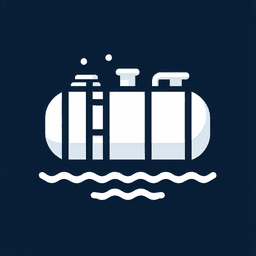
Holding Tank: Definition, Uses, and Examples
January 16, 2025
Holding Tank
A holding tank is an essential component in maritime vessels, designed to store waste temporarily until it can be properly disposed of at a suitable facility. These tanks are crucial for maintaining environmental standards and ensuring that waste is not discharged directly into the sea, which can be harmful to marine life and ecosystems.
Typically, holding tanks are used to store sewage and greywater generated from onboard activities such as using toilets, showers, and sinks. The size and capacity of a holding tank can vary depending on the size of the vessel and the number of people onboard. Regulations often dictate the minimum requirements for holding tank capacity to ensure compliance with environmental protection laws.
Modern holding tanks are equipped with sensors and alarms to alert the crew when the tank is nearing capacity, ensuring timely disposal at designated pump-out stations. Some systems also include treatment options that can process the waste to reduce its volume or make it safer for discharge under certain conditions.
For sailors and maritime users, understanding the operation and maintenance of holding tanks is crucial. Regular maintenance, including cleaning and inspection, helps prevent blockages and ensures the system functions efficiently. Additionally, knowing the local regulations regarding waste disposal is important to avoid fines and contribute to marine conservation efforts.
Frequently Asked Questions About Holding Tanks
Is a Holding Tank the Same as a Septic Tank?
No, a holding tank is not the same as a septic tank. Holding tanks are designed to store sewage temporarily until it can be transported to a treatment facility. They do not treat the sewage themselves. In contrast, septic tanks partially treat sewage by allowing solids to settle and liquids to flow out for further treatment in the soil.
What is the Purpose of a Holding Tank?
The primary purpose of a holding tank is to store waste, such as sewage or other liquids, until it can be safely and legally disposed of. This is crucial in maritime contexts to prevent pollution and comply with environmental regulations.
How Big Can a Holding Tank Be?
Holding tanks can vary in size depending on the vessel's requirements. For example, they can range from 2000 gallons to over 2600 gallons, with dimensions tailored to fit the specific needs of the vessel.
How Often Does a 2000 Gallon Holding Tank Need to Be Pumped?
The frequency of pumping a 2000-gallon holding tank depends on usage. Typically, such tanks are pumped every 6 to 8 weeks, but this can vary based on the number of people on board and the amount of waste generated.




